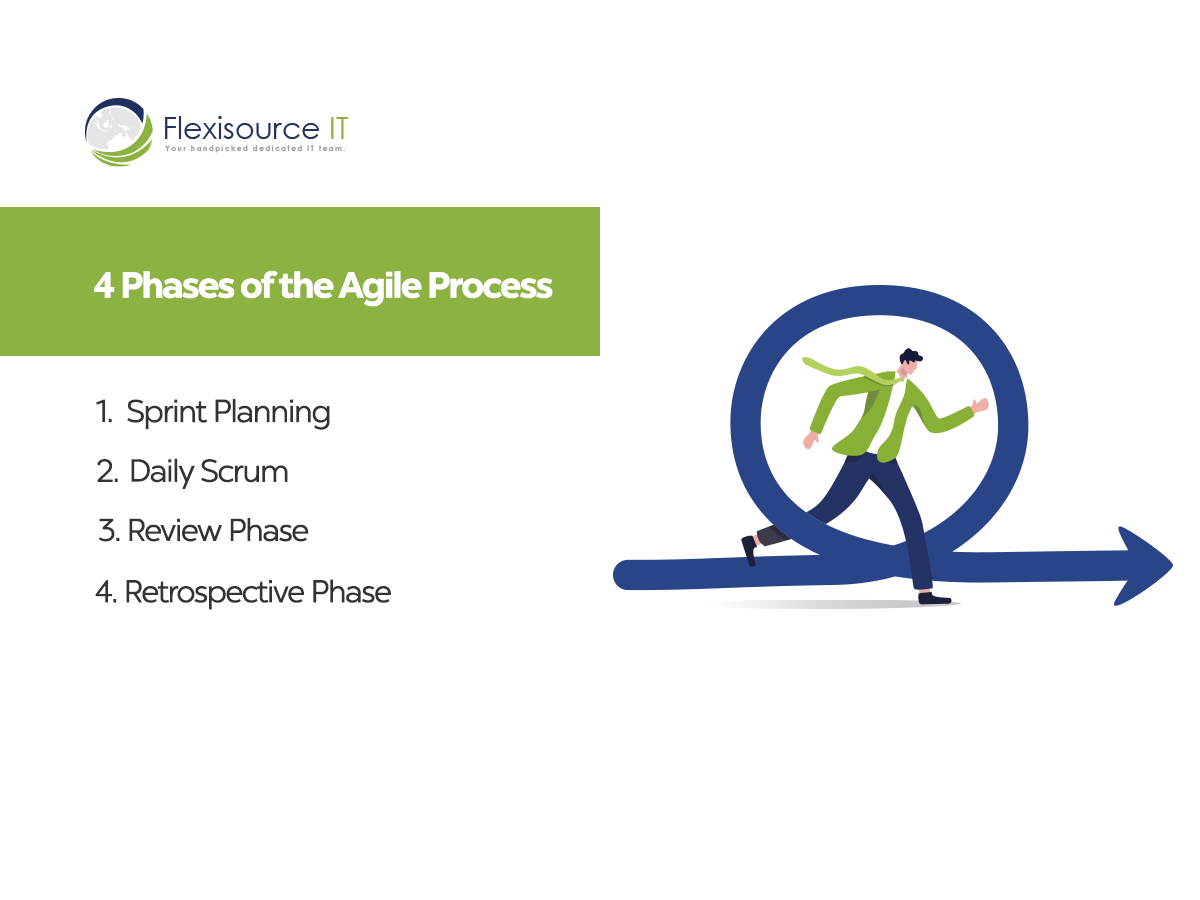The Agile methodology is a project management method that promotes flexibility and collaboration among team members. It emphasizes the need for quick responses to changes in requirements and feedback from users. Agile methods help organize projects by breaking them up into small, manageable tasks that can be done in a short amount of time.
This methodology works best with a software development process because it encourages collaboration, feedback, and quick decision-making. The goal of Agile is to create software that is reliable, efficient, and effective. The Agile methodology emphasizes how important it is to get feedback from users and change requirements quickly.
Essentially, this framework focuses on feedback and feedback cycles, which helps to create a better product. Agile methods allow for short, frequent iterations that help to improve the quality of the product quickly.
Benefits of Agile
There are several reasons why you might want to implement the Agile methodology in your organization. Let’s take a look at some of them.
Better product delivery
In today’s fast-paced business environment, it is essential for companies to be able to quickly adapt and respond to changes in the market. This is the part where the Agile methodology kicks in. The Agile methodology enables companies to respond quickly and efficiently to changes in customer needs and market conditions.
One of the main advantages of using the Agile methodology is that it leads to better product delivery. With Agile, products are delivered in small increments, which allows for quick feedback from customers and stakeholders. This helps ensure that the final product meets customer needs and expectations.
Reduce the cost of software development
The Agile methodology allows for incremental, iterative changes to the code. This can reduce the overall cost of software development as well as improve the quality of the final product.
The methodology takes into account the fact that requirements and specifications can change during the software development process. This allows for changes to be made more easily and quickly without having to go back to square one.
In addition, by breaking down the project into smaller increments, it is easier to identify and correct errors. This can help to avoid costly rework later on in the project.

Speed up the development process
Agile is based on the philosophy that change is constant and that it is better to respond to change quickly than to try to predict it. This allows businesses to be more responsive to customer needs and changes in the marketplace.
The Agile methodology consists of five basic principles:
- People and their interactions are more essential than tools and processes
- Working software is more vital than detailed documentation
- Customer collaboration is more important than negotiating contracts
- Adapting to change is more crucial than sticking to a plan
- A sustainable pace is more important than finishing tasks quickly.
These principles make it possible to develop in a flexible, iterative way, which can speed up the process.
Improve communication between team members
When a team is able to communicate openly and frequently, they are able to work more efficiently together. The Agile methodology has revolutionized the way teams communicate by emphasizing face-to-face communication, timely and concise feedback loops, and a commitment to transparency. This has resulted in teams that are more efficient and cohesive.
The Agile methodology focuses on short sprints with regular communication between team members. This allows the team to quickly identify any potential issues and address them before they become bigger headaches.
Also, regular communication makes it easier for team members to trust each other, which can be very helpful when working on complicated projects.
Avoid problems before they occur
The Agile methodology is based on the concept of “inspect and adapt.” This means that teams constantly review their work and make changes as needed. Issues can be identified and dealt with quickly since new features are continuously released to users in small batches. Teams can get feedback from users early and often, which helps to ensure that the product meets user needs.
How to Get Started with Agile
Getting started with Agile is a process that takes time and effort. Here are some surefire tips to help you get started:
- Learn about Agile and what it entails. There are many resources available on the internet, including articles, videos, and books.
- Identify key members of your team who will be dedicated to the Agile process. This includes both developers and stakeholders.
- Create a safe environment for experimentation. It’s important to be willing to try new things and fail fast in order to learn and improve.
- Set up some basic rituals such as stand-ups, retrospectives, and demos. These help keep the team focused and on track.
- Create or find existing templates for user stories, sprints, and releases that fit your team’s needs.
Implementing Agile: How to Make the Switch
Making the switch to Agile can be difficult, but with these tips, it can be a little bit easier.
- Start small – Don’t try to change everything overnight. Start by implementing one or two Agile practices and see how it goes.
- Be flexible – Agile is all about being flexible and adapting to change, so don’t be afraid to change your plans as needed.
- Communicate effectively – This is key in any type of project, but especially when using Agile methods.
- Get help from others – There are plenty of resources available online and in books, so don’t be afraid to ask for help when you need it.
- Be patient – It takes time to get used to new ways of working, so give yourself and your team some time and don’t expect perfection right away.
The Agile Process: How it Works and What to Expect
Agile projects are typically completed in shorter timeframes than traditional projects. This is because Agile projects are broken down into smaller tasks that can be completed in a short period of time.
The Agile process is broken down into four phases: sprint planning, daily scrum, review, and retrospective.
The sprint planning phase includes creating a product backlog and determining the work that needs to be done in the upcoming sprint. The next phase, the daily scrum, is a meeting that happens every day where team members report on what they accomplished yesterday, what they will work on today, and any blockers they are facing.
In the review phase, team members meet to discuss what was completed in the past sprint and what still needs to be done. The retrospective phase is where team members reflect on how the past sprint went and make changes if needed.
In an Agile project, the product owner works with the team to come up with a prioritized list of features for the product. The team then selects a set of features that they believe can be completed in the next sprint. The team proceeds to work on these features and updates their progress on a daily basis.
At the end of each sprint, the team presents their work to the product owner, who decides whether or not to accept it. If the product owner does not accept all of the work from a sprint, then the team goes back to work and updates their list of features for the next sprint.

Agile Tools and Techniques: Ways to Make Your Team More Productive
Introducing Agile tools and techniques can help make your team more productive by improving communication and collaboration. There are many different options for Agile tools and techniques, so it’s important to find the ones that work best for your team.
Some popular Agile tools and techniques include Kanban boards, Scrum boards, and task cards. Kanban boards are used to visualize the workflow of a project, while Scrum boards help track the progress of tasks and deadlines. Task cards can help keep track of individual tasks and their status.
It’s important to select the right tools and techniques for your team’s needs. Don’t be afraid to experiment with different options until you find what works best.
Common Agile Issues and How to Solve Them
The Agile methodology is a popular choice for software development teams, but it’s not without its problems.
One common issue with Agile is that it can be difficult to stick to the schedule. This is often due to changes in requirements or unexpected delays. To help overcome this problem, it’s important to have a good plan and be flexible when things don’t go as planned.
Another issue with Agile is that it can be difficult to get everyone on the same page, which can often lead to disagreements and confusion about what needs to be done. It’s crucial to have clear goals and communicate effectively with your team.
Finally, Agile can be challenging when it comes to tracking progress and measuring results. This is especially true when it comes to testing and evaluating software. There are many different tools and processes that can help with this, so having an Agile toolkit that’s well-suited to your organization will make it easier for everyone to manage.
Should you opt for Agile?
The Agile methodology has been shown to have a plethora of benefits for software development teams. It allows for faster response time to change, increased collaboration, and improved overall productivity. Additionally, Agile helps to ensure that products are delivered on time and within budget. Because of these benefits, this methodology is becoming more and more popular in the software development industry.
Talk to us today to find out more about Agile Development!











